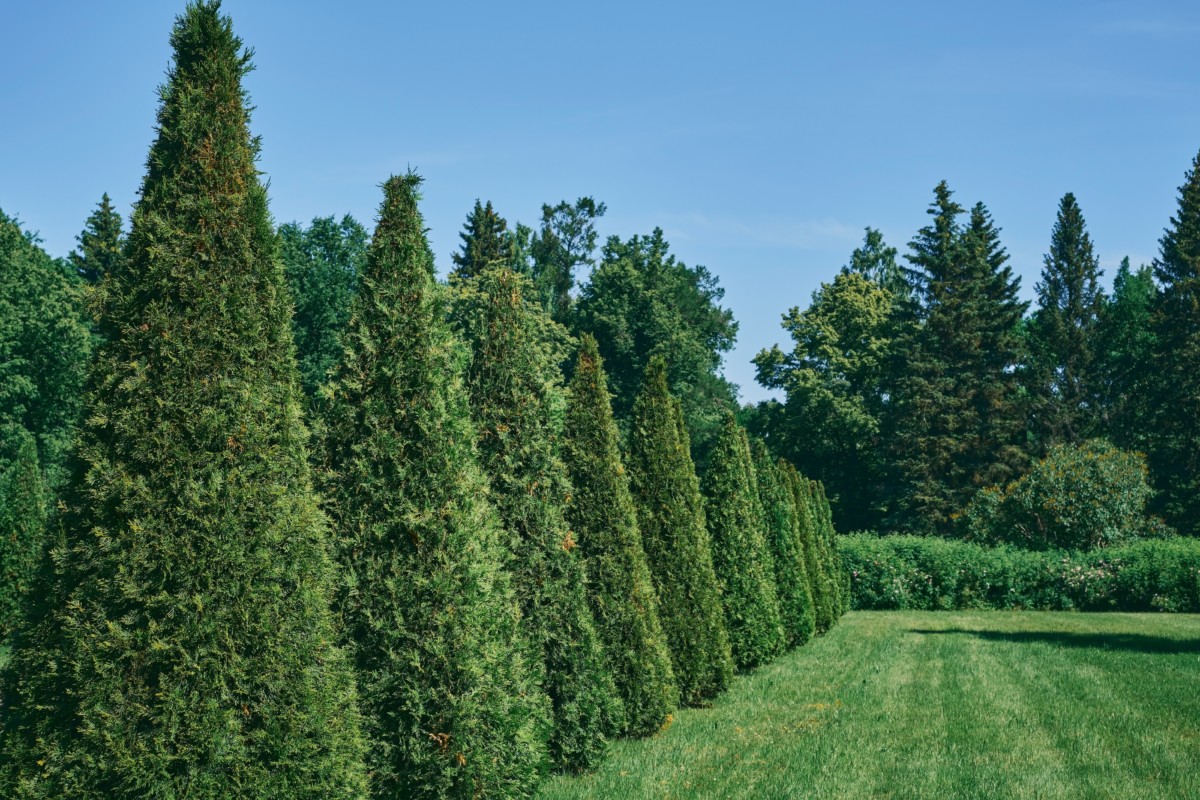
Good friends are hard to come by. But good neighbors? Harder still. So, when you’ve grown tired of staring out your kitchen window at the neighbor’s collection of “classic” cars, he’s going to fix up one of these days. Or you’re a little tired of reminding the kids next door that your ornamental pond is not the local swimming hole; it’s time to grab a shovel and dig a hole.
To plant a tree.
Geeze, what did you think we were going to do?
We’ve all heard the old saying, “Good fences make good neighbors.” But what makes great neighbors is a nice, tall privacy hedge.
If you’ve been kicking around the idea of adding some sort of privacy feature to your yard, one of the first things people think of is a fence. But there are many great reasons to take the natural route and plant trees instead.
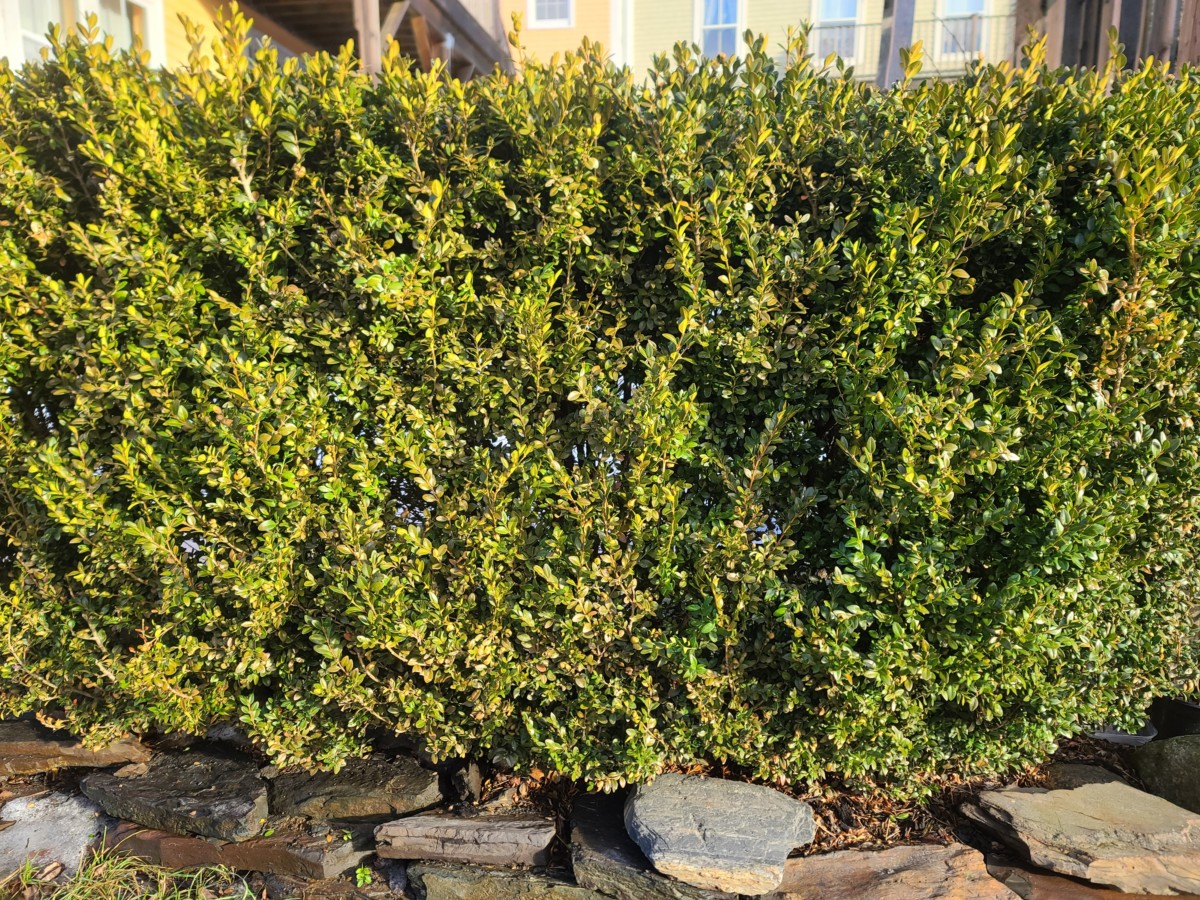
In this piece, we’ll look at the benefits of using trees to create privacy in your backyard. If you thought trees weren’t a good option because it takes decades for them to grow, think again. We’ve got a few recommendations for the fastest growing trees, so you’ll have a lush green hedge faster than you can say, “He brought home another rusty clunker?” Waiting decades for trees to grow? How about three feet or more of growth per year.
What Are the Benefits of Using Trees to Create Privacy?
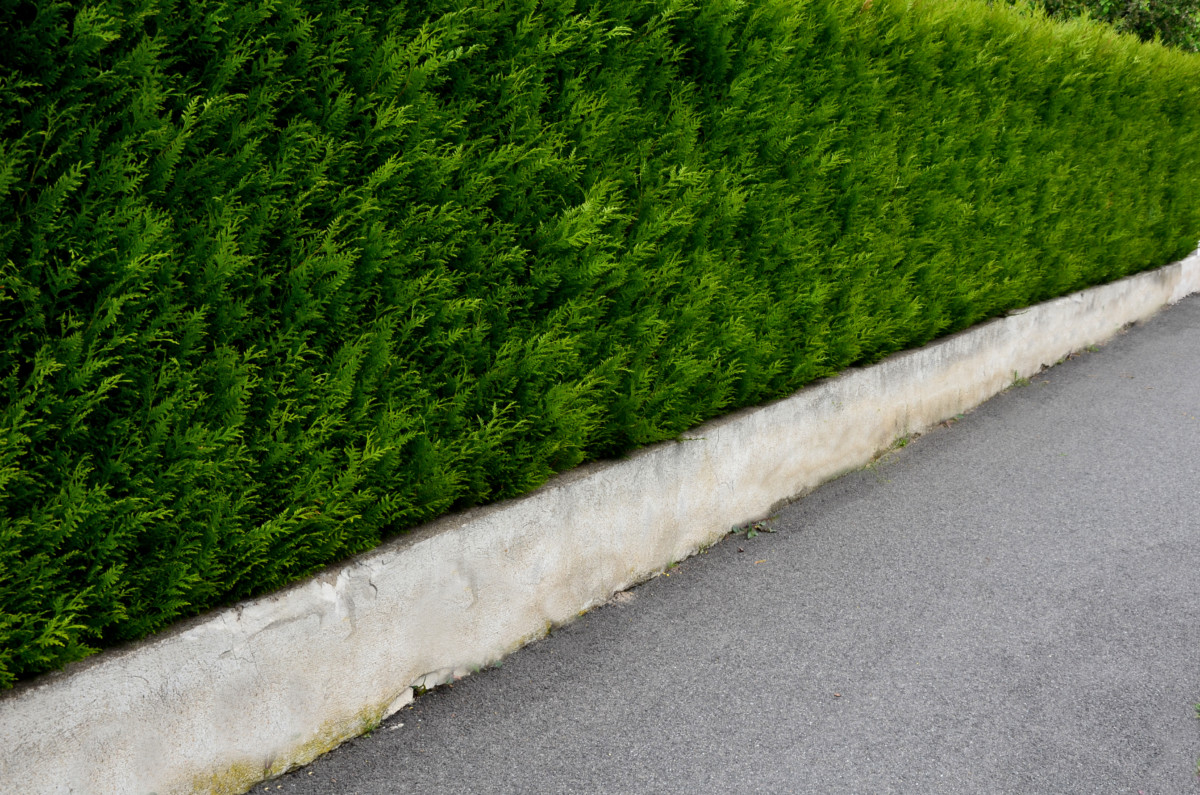
Trees are pretty great when it comes to creating a more private and enclosed atmosphere in your yard. With all of the natural benefits that come from using trees, why would you even consider a fence?
1. Shade
Naturally, shade comes to mind when you think of trees. Planting a privacy hedge allows you to grow shade where you need it. Plan a shorter hedge to shade a portion of your lawn that gets too hot or where shade is wanted during certain times of the day.
Planting a privacy hedge alongside your house can also help with cooling bills during the summer. There are even several quick-growing trees that grow tall enough to shade second stories too.
2. Windbreak
If the wind is a problem, trees make excellent buffers. A tall hedge of arborvitae will shield your house from gusts that can easily strip your home of heat during the winter. If you’re looking for a way to lower heating bills without replacing your current heating system, a hedge can go a long way to help you conserve fuel.
Windbreaks are also great for other plants. Use a tree windbreak to shelter the more delicate plants in your yard and garden.
3. Sound
If you’ve got a lot of street noise or noisy neighbors, consider growing a hedge instead of installing a fence. Hard fencing can make ambient noise seem louder as the sound bounces off the fencing. But tall hedges, especially with trees that have foliage all the way to the ground, will absorb sound, giving you a quieter backyard.
4. Living Fence
Again, choose a tree or shrub with foliage that starts at the ground, and a thick hedge will keep out humans and most critters larger than a rabbit. That includes the neighbor’s dog that likes to leave presents on your lawn.
5. They Just Look Nice
Trees are beautiful. Come on, are you really going to make me go into detail here? Yes, there’s some pretty nice fencing out there, but wouldn’t you rather have lush, green trees growing in its place?
6. Useful
Your living privacy screen doesn’t have to be purely ornamental. You could start a hedgerow. These living walls provide sanctuary for many creatures and can even repay you with tasty things to eat, such as raspberries or blackberries. Check out Cheryl’s great article detailing why you should add a hedgerow to your property.
7. Carbon Offset
If having privacy in your backyard and global climate issues is important to you, then opting to use trees rather than some sort of commercial fencing is the way to go. Trees are fantastic at storing carbon. Not to mention there’s that bonus of them making oxygen. When you take into account the manufacturing processes involved for most composite fencing materials, growing trees as a fence is a far better option for the planet.
8. Height
Depending on your needs, a normal fence might not cut it. If you’ve got a second story or balcony in full view of the neighbors, then using certain trees can provide you with the coverage you need. Good luck finding a fence that will reach that high.
9. Expense
The expense is one of the best reasons for choosing trees over fencing when creating privacy. It’s much more economical to purchase trees, even many of them, than it is to install a fence.
Let’s Get Growing – Fast
We’ve rounded up the fastest-growing trees to give you a green, lush privacy screen in no time. And we mean fast. We want privacy ASAP! Only trees that put on three feet a year or more made it onto our list.
1. Leyland Cypress
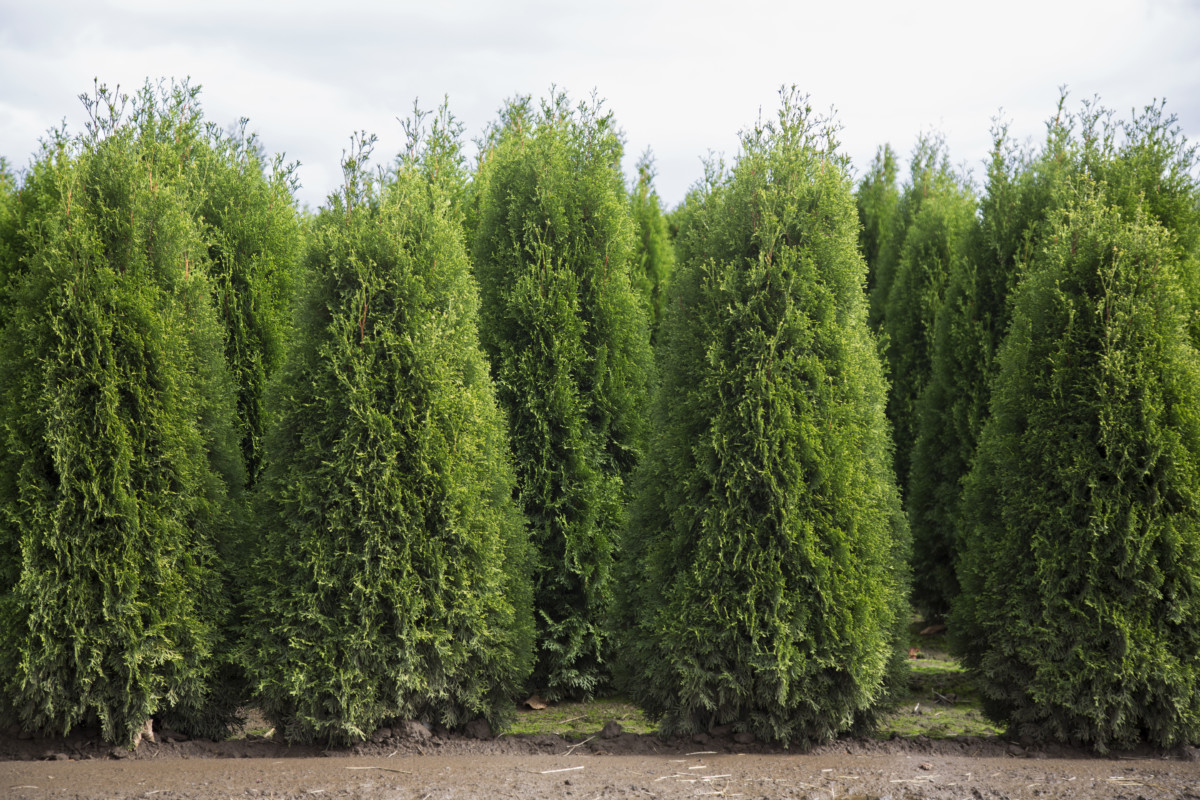
The Leyland cypress is hands down the most-planted privacy tree in the states. And for good reason, too – it can put on an impressive four feet a year of growth. They aren’t finicky about soil and will grow well even in areas with cold winters. Not only does this tree grow tall, but it also fills in with feathery branches, creating the perfect privacy screen.
Cupressus
Mature Height 40-60 feet
Zones – 6-10
Full-sun
2. Thuja Green Giant Arborvitae
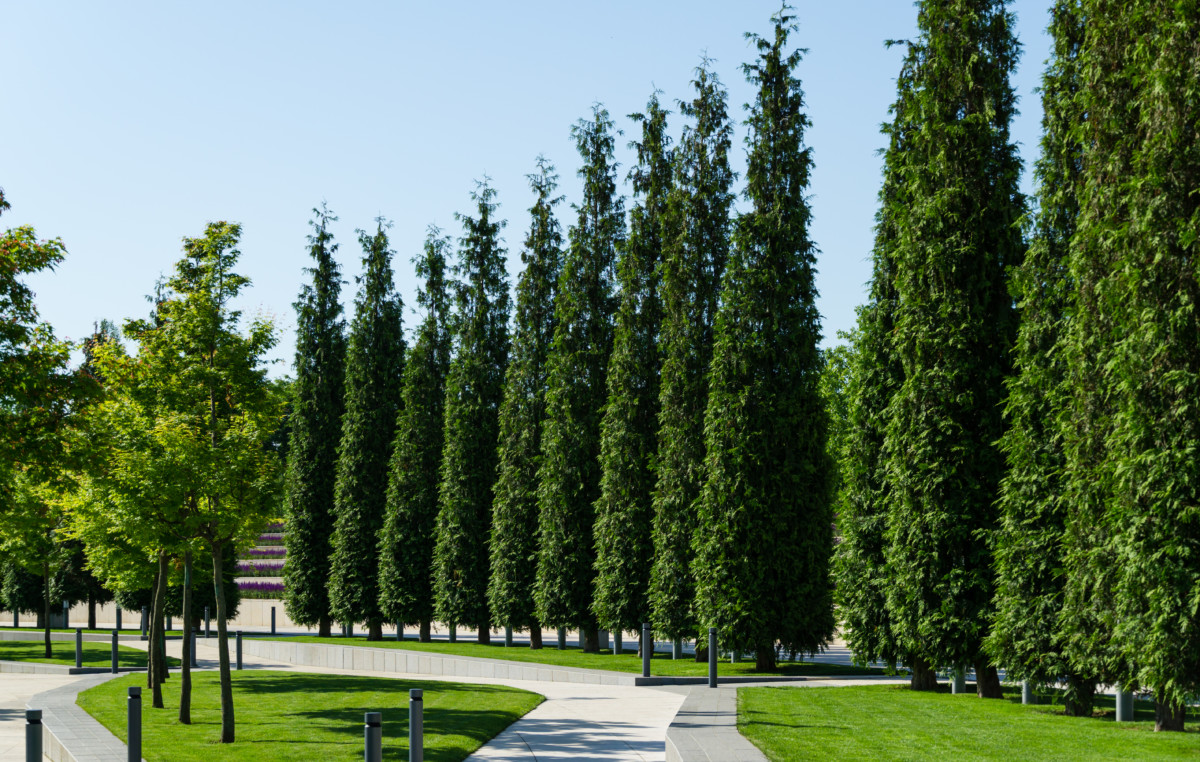
If you want one of the easiest to grow trees out there that give you excellent, dense foliage for privacy, then you want a Thuja green giant arborvitae. I used to work for a tree care and landscaping company, and we planted these in landscaping installation after landscaping installation. They’re nearly indestructible – drought-tolerant, impervious to most pests and diseases, and you could probably stand there and watch them grow. The Green Giant can easily add three to five feet each year.
Thuja plicata x standishii ‘Green Giant’
Mature Height 30-50 feet
Zones – 5-8
Full-sun to partial shade
3. Hybrid Poplar
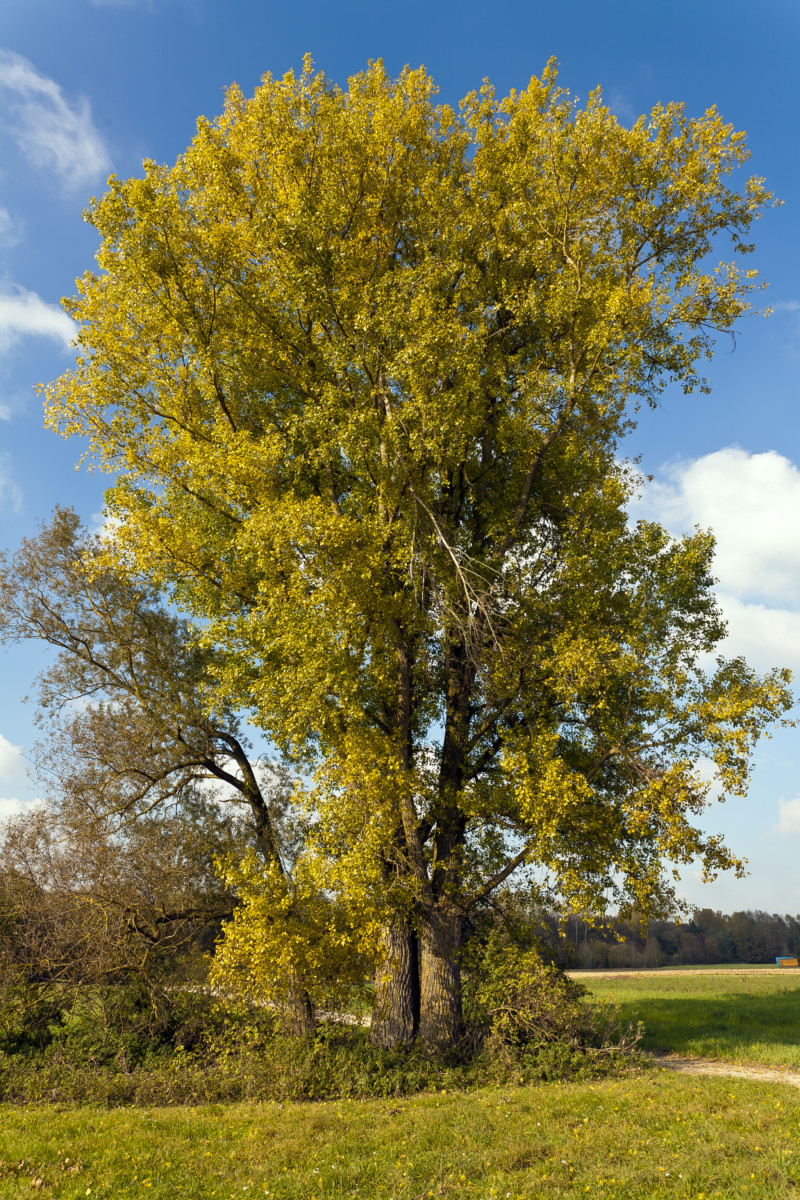
If you need privacy and shade super fast, look no further than the hybrid poplar. This is one of the most popular quick-growing shade trees. Why? Because it can grow up to eight feet in a single year. If you’re looking to sell your home in a few years and want to add some easy property value, plant a hybrid poplar or two.
Populus deltoids x Polulus nigra
Mature Height 40-50 feet
Zones – 3-8
Full-sun
4. Chinese Privet
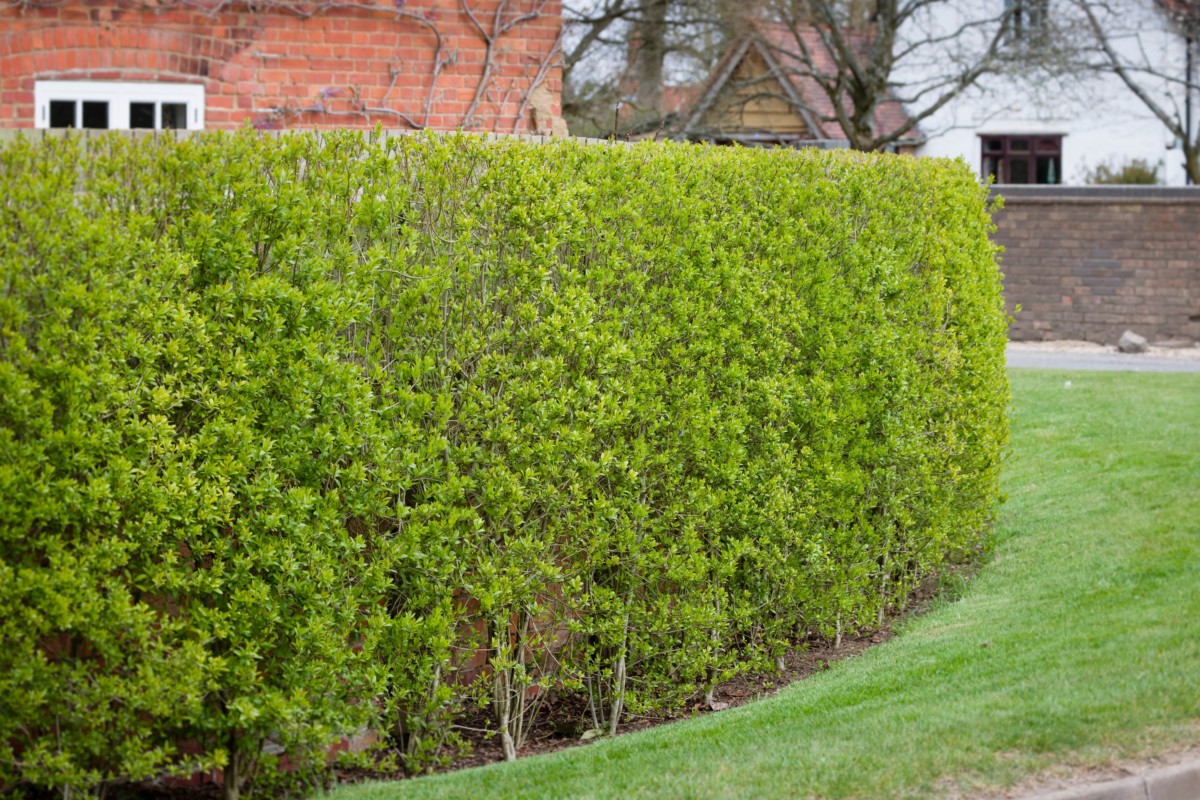
While it’s not the tallest of trees, the privet is a classic privacy hedge option. It grows at three feet per year and fills in just as quickly. They hold their shape nicely when pruned, so they don’t need frequent upkeep. Privet is drought-tolerant and isn’t fussy about soil, making it a great option for folks with less-than-ideal growing conditions.
Ligustrum sinense
Mature Height 6-8 feet
Zones – 7-10
Full-sun or partial shade
5. Nellie Stevens Holly
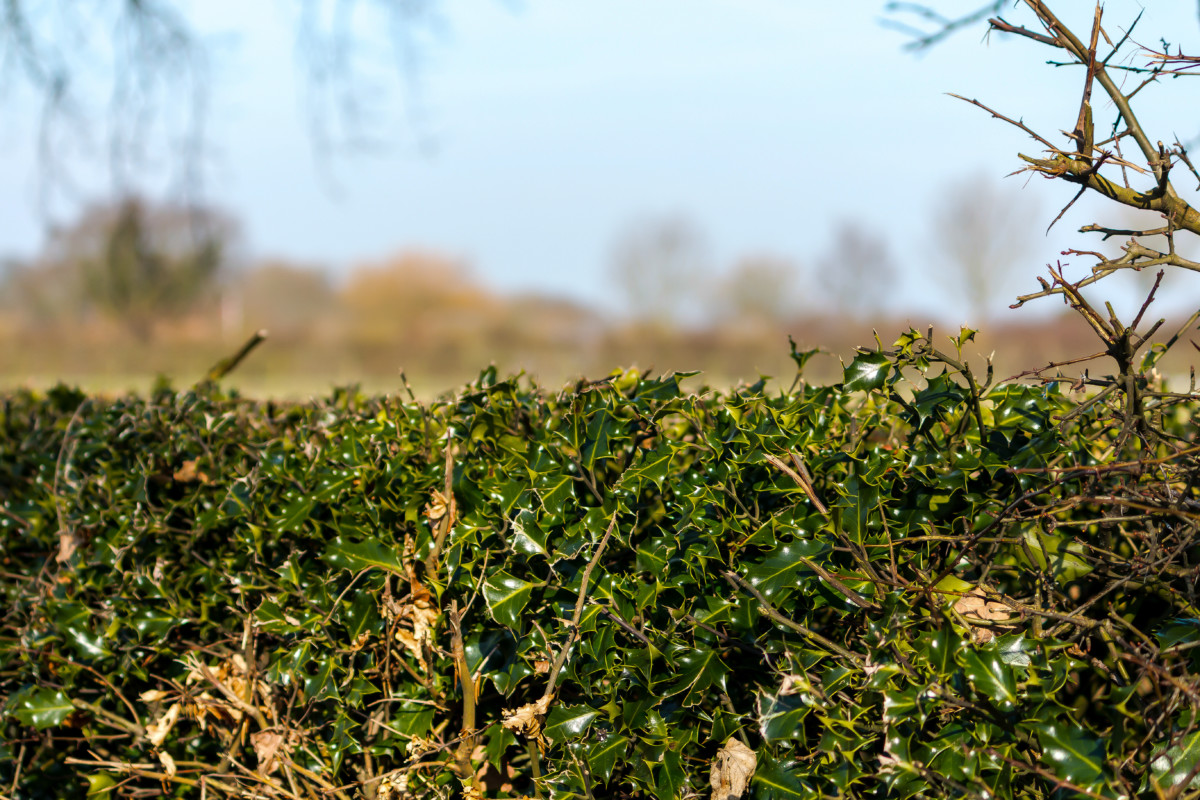
Holly is an excellent choice for a tall privacy screen or a low privacy hedge. Because of its dense, prickly foliage, it creates an impenetrable living fence that’s easily trimmed to keep it looking neat and tidy. Or let it grow wild and free for a more natural-looking hedge.
Grown as a tree, it will add three feet to its height each year. They are great drought-tolerant trees if you live in a dry area.
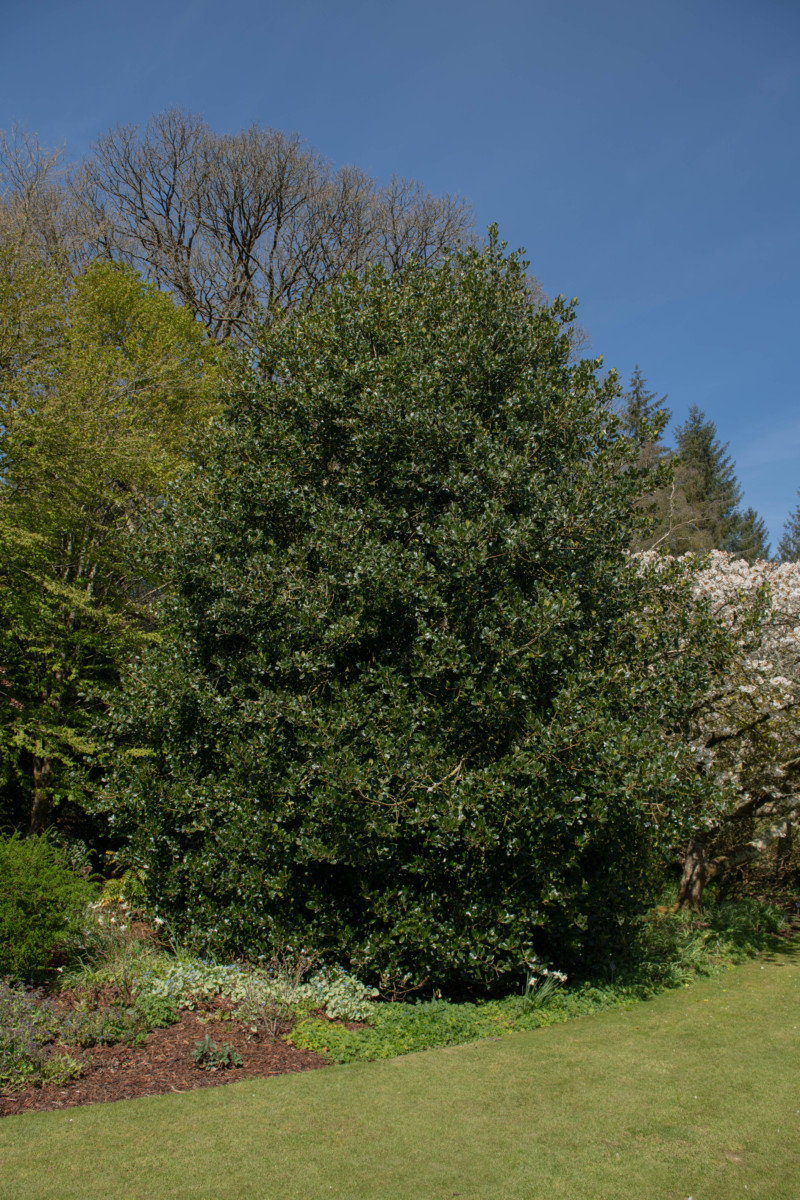
Ilex X ‘Nellie R. Stevens’
Mature Height 15-25 feet
Zones – 6-9
Full-sun to partial shade
6. Italian Cypress
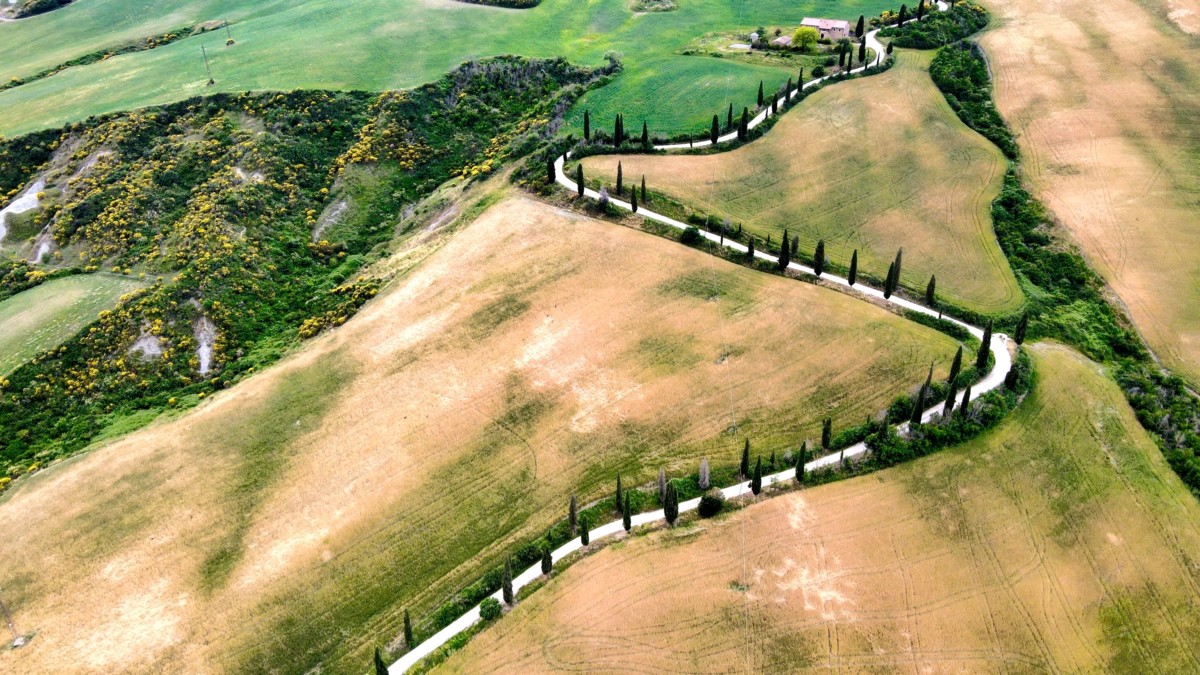
For classic looks, you can’t go wrong with the Italian cypress. Its tall, slender silhouette evokes images of Tuscan roads lined with these silent sentinels. While the Italian cypress doesn’t grow as wide as some of the other trees on our list, it makes up for it in how quickly it grows at three feet per year. Look no further if you want an evergreen with a shape other than the usual conical growth.
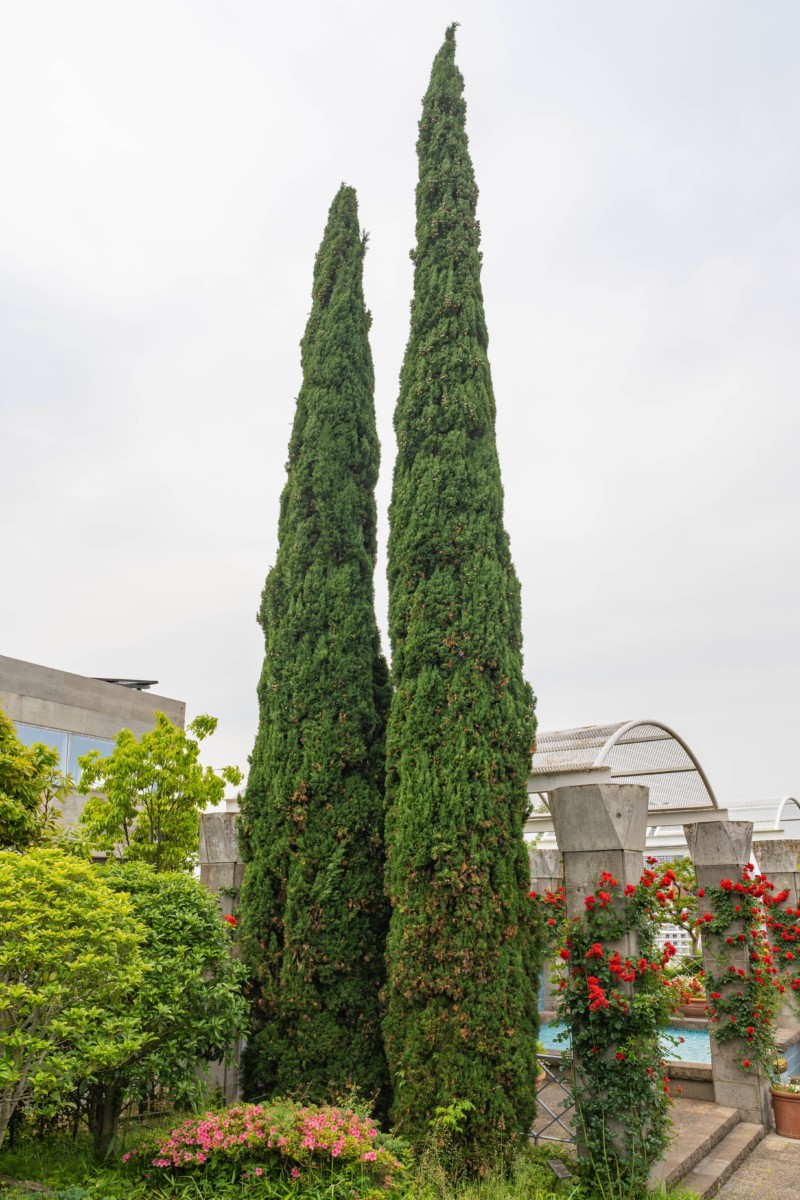
Cupressus sempervirens
Mature Height 35-40 feet
Zones – 8-10
Full-sun
7. Weeping Willow
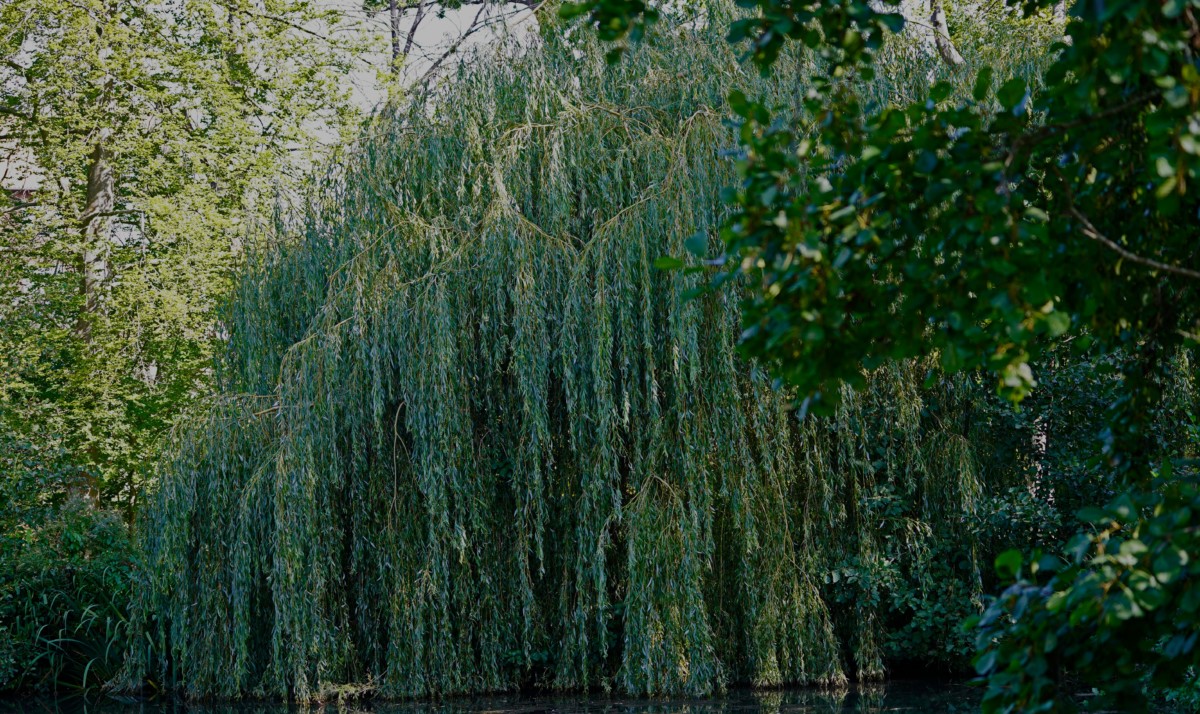
These stunning trees make excellent privacy screens and shade trees. Weeping willows grow at a rate of six to eight feet per year, filling out in long draping branches as well. If you’re looking for something more dramatic, the weeping willow is a great choice. Or perhaps the area you hope to screen has drainage issues or is a bit marshy. A weeping willow thrives in damp, soggy areas.
Salix babylonica
Mature Height 30-50 feet
Zones – 4-9
Full-sun to partial shade
You can create a quiet, beautiful oasis in your backyard with the right tree. There’s an option for all of your needs. And in only a couple of years, you’ll have a tall, natural privacy screen.

Get the famous Rural Sprout newsletter delivered to your inbox.
Join the 50,000+ gardeners who get timely gardening tutorials, tips and tasks delivered direct to their inbox.

